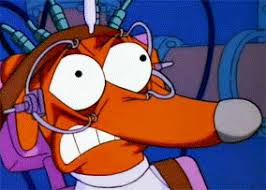
Dabo Swinney didn’t mince words at the conclusion of spring practice when he said the biggest offseason worry remains the defensive line. Well, duh.
Clemson could win a dozen more national titles and never have a foursome quite like it’s enjoyed for the bulk of the past three seasons. Christian Wilkins, Clelin Ferrell, Dexter Lawrence and Austin Bryant were all legitimate stars, all big personalities, all incredibly close knit. That simply doesn’t happen very often.
But how bad should Clemson expect the loss of all four to sting this season?
To be sure, the off-field impact will be immense. We use the term “once in a generation” too often, but guys like Wilkins really are unique. Their personalities and work ethic are so outsized that they dictate the culture of a team. That’s not easily replaced, and no matter how good the underlying structure of a program is, every coach will tell you that great teams must be player-driven.
On the field, however, we can be a little more precise.
First, let’s take a look at the numbers from 2018 when all four linemen were on the field at the same time. They’re not too shabby.

Yeah, those numbers are eye popping to say the least (and, of note, all but 21 snaps occurred in no-garbage time). Clemson’s D hit the QB more than half the plays that those four linemen were on the field together. They got pressure 43 percent of the time. They hit the ball carrier on run plays, on average, less than 1 yard from the line of scrimmage. Nearly one in three runs – not counting sacks – was stopped for a loss or no gain. They allowed just 3.43 yards per play. Only 2011 Alabama has allowed less over the course of a full season.
Of course, there’s the rub. The snaps when all four of the Clemson linemen were on the field at the same time didn’t constitute a full season. In fact, it added up to just 31 percent of the Tigers’ defensive snaps last year — which leaves us with a decent sample size of plays when the Power Rangers weren’t working together.
So, what happened when the No. 2s entered the game?

Let’s start with the opposite end of the spectrum. What happened when none of them were on the field?
Yards-per-play went up by 43 percent. Yards before contact was up nearly 250 percent. Yards-per-dropback was up nearly 50 percent. And while pressure rate and QB contact remained steady, the defense didn’t collect a single INT and allowed more than 15 yards per completion.
Of course, those numbers are a bit misleading. All but 34 of those snaps came in obvious garbage time (with Clemson up by at least three touchdowns), and if the backups were all playing on the D-line, there were likely backups in elsewhere, too. Meanwhile, the opposing team was likely in a pass-heavy, hurry-up scheme, so it’s hardly a good way to tell how the same players might respond in a close game in the second quarter.
We don’t have much of a sample that exclusively excludes just one of the D-linemen (except for Lawrence, who was suspended the final two games), but we can see how the defense performed when any one was off the field and another remained on it.
Some conclusions:
Clelin Ferrell was probably the best of the bunch, and the impact on the D when he’s off the field, particularly on the passing game, was obvious.
The overall impact of the D-line seemed far more significant in stuffing the run than the pass. Some of this may be a result of specific down-and-distance usage, but the broader implication is that the backups are better at getting after the QB than filling gaps at the moment, which jibes with the spring talking points.
Austin Bryant had a bigger impact than most gave him credit for last year. Given that he was doing it while playing hurt should suggest the Lions might have gotten a steal in the fourth round.
Again, sample sizes here are a bit limited, and judging Clemson’s work without Lawrence, for example, can be skewed because it’s game against two really good teams, whereas some of the time spent sitting by the others were against lesser competition.
Perhaps the biggest takeaway as I dug through all these numbers — beyond the obvious that these four were really, really good — is that the rest of the defense is going to have to do more of the heavy lifting in 2019. And that led me to this last comparison.

Yeah, Trayvon Mullen’s departure hasn’t gotten nearly as much attention, but there’s a case to be made he made as big an impact on Clemson’s D last season as anyone.
So, what should we be watching for in camp? Run stuffing and the cornerback rotation would be at the top of my list at the moment. The good news is, Clemson’s recruiting really damn well, so there are options. And as problem areas go, those don’t exactly rise to “panic” level compared with much of the rest of the ACC.
